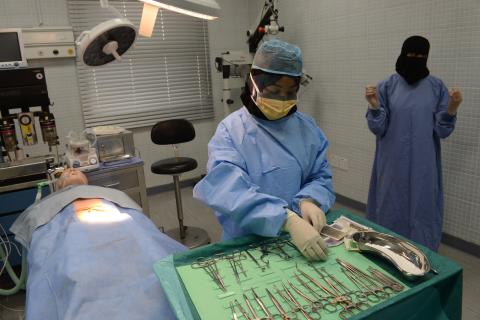Overview

The Department of Anatomy was established in 1976. The department’s activities are coordinated with other pre-clinical and clinical departments and the faculty is actively involved in teaching anatomical subjects to medical undergraduate and graduate students and other students in the health disciplines.
Mission
To enable the students to know the gross and microscopic structure of the human body and its functional relations at the cellular, tissue, organ and systems levels. Emphasis is placed on the clinical application of acquired knowledge. The department has a Master of Science degree program and is involved in applied research.
Goals
On successful completion of each of the courses outlined below, the student should be able to:
- Know the main morphological features at the cellular, tissue, organ and systems levels.
- Project the location of important anatomical structures to the surface of the body.
- Identify the important anatomical structures on x-radiographs, CT and MRI scans.
- Correlate the acquired knowledge with clinical problems commonly encountered.
- Have a basic knowledge of normal human development from the onset of fertilization till birth and its associated common congenital anomalies.
Undergraduate Courses
Gross Anatomy (MDAT 202)
This course provides the core knowledge of the morphology of structures in different regions of the human body, the surface markings of the underlying important structures and the clinical points related to the anatomical knowledge.
Histology (MDAT 207)
This course provides the basic knowledge of the microscopic structure of the tissues, organs and systems and their functional relations.
Embryology (MDAT 205)
This course provides the basic knowledge of normal human development from the onset of fertilization till birth and the common congenital anomalies that may arise during development.
Neuroscience (MDAT 333)
An integrated course conducted by the Departments of Anatomy and Physiology that provides the anatomical and histological structure of the nervous system and its adaptation to function, in addition to the clinical applications of acquired knowledge.
Methods of teaching include lectures, tutorials and laboratory sessions using models, projected specimens, x-rays, video films and living anatomy models.
